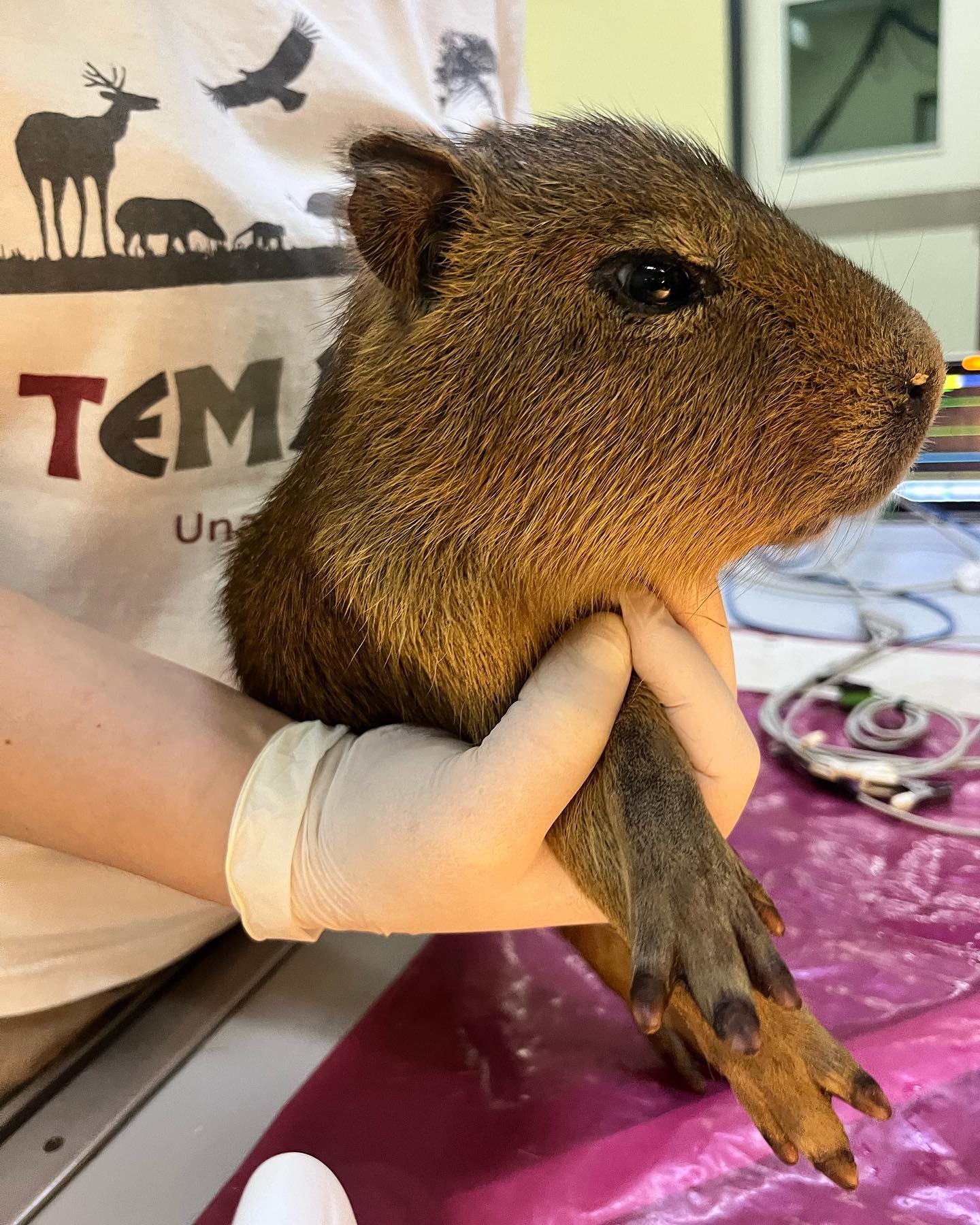Summary Bullet Points:
– The arrival of a baby capybara at the Centro de Recuperación de Especies is an exciting event.
– Capybaras, or carpinchos, are fascinating animals with a natural distribution in various territories.
– Raising awareness about the dangers of domesticating wild animals like carpinchos is important.
– The conservation of natural habitats is crucial for the survival and well-being of capybaras and other wildlife.
– The Centro de Recuperación de Especies is vital in rehabilitating and releasing injured or orphaned animals.
Welcome to the fascinating world of carpinchos, also known as capybaras, and their recent arrival at the Centro de Recuperación de Especies (C.R.E.T)! This small carpincho, weighing only 1.3 kg, has brought much joy to the team at the center with its excellent health condition.
The carpincho has a rather mysterious background. It was brought to the C.R.E.T by a park ranger from the El Corredor Urban Nature Reserve, who, in turn, received it from a private individual. We can only speculate about the circumstances under which this carpincho was separated from its mother. Yet, such situations have become increasingly common as human development encroaches upon the natural territories of these magnificent animals.
In recent years, carpinchos have gained notoriety due to conflicts arising from the urbanization of their natural habitats and the challenges of coexistence. It is important to note that these animals are wild and should never be kept as pets. Domesticating carpinchos poses a danger to both humans and the animals themselves and deprives them of the opportunity to develop alongside their peers in their natural habitat.
Carpinchos are remarkable creatures with fascinating characteristics. They are the largest rodents in the world and inhabit various habitats, including forests, savannas, and wetlands. Their rounded bodies, webbed feet, and expansive incisor teeth allow them to easily navigate both land and water. Carpinchos are excellent swimmers and spend significant time in the water, sometimes even sleeping with only their nostrils above the surface.
Another intriguing aspect of carpinchos is their social behavior. They form tight-knit groups, commonly called “herds” or “families,” which consist of one dominant male, several females, and their offspring. These groups can range from a few individuals to over 100, creating a dynamic and cooperative community. Incredibly, carpinchos are known to engage in alloparenting, where other females assist in caring for and protecting the young.
Carpinchos also have a unique relationship with several other animals. They are often seen alongside birds, such as the Wattled Jacana, which take advantage of their presence to forage for insects and small aquatic organisms disturbed by the carpincho’s movement. Additionally, these charismatic rodents have a symbiotic relationship with caimans. While carpinchos benefit from the caimans’ protection against predators, they also warn the caimans of approaching threats by emitting a series of vocalizations. It is a mutually beneficial alliance showcasing species’ interconnectedness within an ecosystem.
The arrival of this baby carpincho at the C.R.E.T highlights the importance of institutions dedicated to rehabilitating and conserving wildlife. The center provides a haven for injured or orphaned animals, where they receive medical attention and proper nutrition and, when possible, are prepared for eventual release back into the wild. The care and expertise of the dedicated staff at the C.R.E.T ensure that animals like this carpincho have the best chance of survival and reintroduction into their natural habitat.
However, the work of rehabilitation centers alone is not enough to secure the future of carpinchos and other wildlife species. We must raise awareness about the dangers of domesticating wild animals and the importance of conserving their natural habitats. By supporting initiatives that protect and restore these habitats, we can ensure the survival and well-being of carpinchos and countless other species.
In conclusion, the arrival of the baby carpincho at the C.R.E.T. serves as a reminder of these animals’ unique and awe-inspiring nature. Through their remarkable swimming abilities, social behavior, and interconnected relationships within their ecosystem, carpinchos captivate our imagination and remind us of the beauty and diversity of the natural world. Let us cherish and protect these magnificent creatures and work towards a future where humans can peacefully coexist with wildlife in their natural habitats.
*****
Source Description
CRÍA DE CARPINCHO INGRESADA AL CRET 🍼
Este pequeño carpincho, también conocido como capibara, llegó al Centro de Recuperación de Especies pesando no más que 1,3 kg y con un buen estado de salud. 👍🏻
Poco sabemos de su historia: fue acercado por un guardaparques de la Reserva Natural Urbana El Corredor quien a su vez lo había recibido de un particular. Las circunstancias en las que se separó de su madre son desconocidas.
👉🏼 Esta especie cobró cierta notoriedad en los últimos años a partir del conflicto originado por la urbanización de territorios en los que estos animales tenían distribución natural y la convivencia que esto supone.
⚠️ A tener en cuenta: los carpinchos son animales silvestres y bajo ningún motivo deben ser criados como mascotas ya que esto implica un peligro tanto para las personas como para ellos, además de quitarles la posibilidad de desarrollarse junto a otros de su especie en su hábitat natural.

